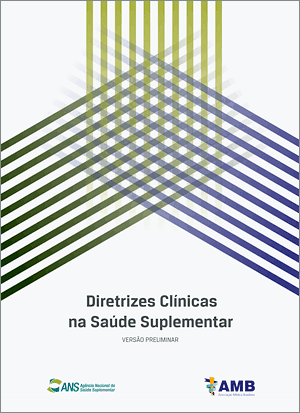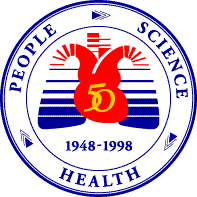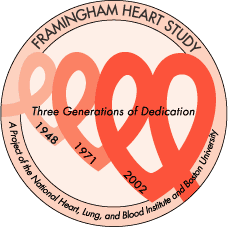This Blog AMICOR is a communication instrument of a group of friends primarily interested in health promotion, with a focus on cardiovascular diseases prevention. To contact send a message to achutti@gmail.com http://achutti.blogspot.com
Translate AMICOR contents if you like
Monday, November 30, 2009
Prevalence of diabetes and hypertension based on self-reported morbidity survey, Brazil, 2006
The '00s: Goodbye (at Last) to the Decade From Hell


1. The '00s: Goodbye (at Last) to the Decade From Hell
Bookended by 9/11 and a financial wipeout, the first 10 years of the century will likely go down as the most dispiriting decade Americans have lived through since World War II. Can the next one be better?
Tabagismo: Diretrizes

Time: The Year in Health 2009 >A to F
Global health experts agonize over the terrible toll disease takes on the world's children, but a lot less attention is paid to how many kids' lives are claimed by accidents and injuries. Part of that is a numbers game: close to 10 million children under 5 die annually of disease. Comparatively few — 829,000 per year — die because of accidents. Still, that's 2,270 children every day. In late 2008 the World Health Organization issued its first annual report on the problem, listing the top five killers and what can be done to combat them:
Traffic injuries: 260,000 deaths per year. In the developed world, most victims are passengers in vehicles; in the developing world, most are pedestrians or bicyclists. The solutions include seat-belt laws, speed limits and stiffer drunk-driving penalties. The key is imposing and enforcing the rules.
Drownings: 175,000 deaths per year. Parental supervision, CPR education and fenced swimming pools are crucial.
Burns: 96,000 deaths per year. Infants are at greatest risk. The danger is lowest for kids ages 10 to 14 and rises for 15-to-19-year-olds — perhaps because of access to fireworks and gasoline. Smoke alarms, parental policing, childproof lighters and burn centers all reduce risk.
Falls: 47,000 deaths per year. Caregiver stress or inattention, nonchildproof environments and low levels of maternal education are risk factors. Solutions include redesigned playgrounds and furniture, parental-education programs and window guards.
Poisonings: 45,000 deaths per year. Kids under 1 are in the most danger. Child-resistant packaging and measures like removing poisons from the house or keeping them locked up can help.
View the full list for "The Year in Health 2009"Read more: http://www.time.com/time/specials/packages/article/0,28804,1942543_1942451,00.html?xid=newsletter-daily#ixzz0YLm5j91W
Jorge Gerdau: o Brasil precisa aproveitar boa fase para ter crescimento sustentável

Sunday, November 29, 2009
VIII Jornada de Cardiologia de Pelotas
Rich v. poor: The lives we can expect from our income

Published on Wednesday, Nov. 25, 2009 7:40PM ESTLast updated on Friday, Nov. 27, 2009 2:20AM EST
Life expectancy in Canada rivals that of almost any country in the world. A girl born today can expect to live, on average, to 82 and a boy to a more modest 76.9, according to Statistics Canada.
But life expectancy is a crude measure that tells a superficial story, so there have been many attempts to drill down into the data.
There are, for example, wide regional variations. In Canada, there is a West-to-East-to-North health gradient: Those who are healthiest and live longest are on the Pacific Coast, and the numbers get gradually worse as you move across the nation to the Atlantic region. Then, when you look to the North, the numbers take a precipitous drop. In the territories, life expectancy is similar to that in low- and middle-income countries.
Just as there are regional variations, there are differences across the lifespan. Those who die early tend to skew data on average life expectancy.
This has given rise to the popular measure of life expectancy at 65. On her 65th birthday, a Canadian woman can expect to live 21 more years on average, and a man almost 18./.../
Thursday, November 26, 2009
Norbert Wiener
Biograph
Wednesday, November 25, 2009
DCV matam menos 20,5% no BR (1990-2006)
 Doenças cardiovasculares matam 20,5% menos brasileiros. |
Heart disease evident in mummies 3500 years old
November 23, 2009
Salt Habit: Stroke, CV Disease
| ||
Cutting the average salt intake in half could prevent a substantial proportion of strokes and heart disease in most Western countries, a meta-analysis showed. A decrease of 5 grams of salt a day (about one teaspoon) was associated with a 23% lower stroke rate and up to 17% less total cardiovascular disease, reported Pasquale Strazzullo, MD, of the "Federico II" University of Naples, Italy, and colleagues online in BMJ. This kind of change at the population level "could avert some 1.25 million deaths from stroke and almost three million deaths from cardiovascular disease worldwide," the researchers wrote. Americans, like those in many Western countries, average about 10 g of daily salt intake; whereas the World Health Organization recommends only 5 g per day, and the U.S. Department of Agriculture recommends daily intake be limited to 5.8 g. |
Tuesday, November 24, 2009
Signatures of Consciousness: A Talk by Stanislas Dehaene
Monday, November 23, 2009
World Development Report 2010
World Development Report 2010 | ||
| World Development Report 2010: Development and Climate Change | ||
 September 15, 2009—Developing countries can shift to lower-carbon paths while promoting development and reducing poverty, but this depends on financial and technical assistance from high-income countries, says World Development Report 2010: Development and Climate Change. High-income countries also need to act quickly to reduce their carbon footprints and boost development of alternative energy sources to help tackle climate change. If they act now, a 'climate-smart' world is feasible, and the costs for getting there will be high but still manageable. More from the press release. | ||
Sunday, November 22, 2009
Framingham milestones
A Timeline of Milestones from
The Framingham Heart Study
Since inception in 1948 the Framingham Heart Study has produced many major discoveries that have helped scientists understand the development and progression of heart disease and its risk factors--and helped Americans protect the health of their hearts.
Some of the important milestones include:/.../
Tough-Love Health Incentives

Fat Fees and Smoker Surcharges: Tough-Love Health Incentives
Psychology Professor Anita Blanchard has a pretty sweet deal with her employer. Even if the 40-something mother of three leaves her job at the University of North Carolina at Charlotte, the state of North Carolina guarantees her premium-free health insurance that will cover 80% of her health care costs for life. But's there's a hitch: she can't gain too much weight or start smoking. If she does, she could be on the hook for an additional 10% of her health care tab./.../
Saturday, November 21, 2009
"A carne das fazendas americanas é imoral"
O menino Jonathan Safran Foer tinha 9 anos quando se deu conta de que o frango servido com cenouras em seu prato, receita favorita preparada por sua avó judia que sobrevivera ao nazismo, era feito de uma ave que dias antes estava viva. A revelação, feita por uma babá vegetariana, transformou sua maneira de encarar a comida. De lá para cá, Foer virou vegetariano e voltou a comer carne várias vezes, por vários motivos – do princípio ético ao desejo por belas garotas engajadas na proteção dos animais. A gangorra alimentar parou quando, perto dos 30 anos e já autor de um best-seller premiado, ele se tornou pai. Ele não queria que as memórias alimentares que seus filhos carregariam por toda a vida tivessem o mesmo sabor animal das suas. Foer resolveu então abandonar a carne em definitivo e começou a escrever sobre o assunto. Seu exercício filosófico resultou no livro Eating animals, recém-lançado nos Estados Unidos e ainda sem tradução para o português./.../
Rights of the Child: 20 years
UNICEF full report: The 20 year anniversary of the Convention of the Rights of the Child
 On 20 November 2009, the global community celebrates the 20th anniversary of the adoption by the United Nations General Assembly of the Convention on the Rights of the Child, the unique document that sets international standards for the care, treatment and protection of all individuals below age 18. To celebrate this landmark, the United Nations Children’s Fund is dedicating a special edition of its flagship report The State of the World’s Children to examining the Convention’s evolution, progress achieved on child rights, challenges remaining, and actions to be taken to ensure that its promise becomes a reality for all children.
On 20 November 2009, the global community celebrates the 20th anniversary of the adoption by the United Nations General Assembly of the Convention on the Rights of the Child, the unique document that sets international standards for the care, treatment and protection of all individuals below age 18. To celebrate this landmark, the United Nations Children’s Fund is dedicating a special edition of its flagship report The State of the World’s Children to examining the Convention’s evolution, progress achieved on child rights, challenges remaining, and actions to be taken to ensure that its promise becomes a reality for all children.Friday, November 20, 2009
The State of World Population 2009
|
The State of World Population 2009
Facing a changing world: women, population and climate
United Nations Population Fund - November 2009
Available online as PDF [104p.] at: http://www.unfpa.org/swp/2009/
Website: http://www.unfpa.org/swp/2009/
French: http://www.unfpa.org/swp/2009/
Spanish: http://www.unfpa.org/swp/2009/
“…..Climate—the average of weather over time—is always changing, but never in known human experience more dramatically than it is likely to change in the coming century. For millennia, since civilizations arose from ancient farming societies, the earth's climate as a whole was relatively stable, with temperatures and patterns of rainfall that have supported human life and its expansion around the globe.
A growing body of evidence shows that recent climate change is primarily the result of human activity. The influence of human activity on climate change is complex. It is about what we consume, the types of energy we produce and use, whether we live in a city or on a farm, whether we live in a rich or poor country, whether we are young or old, what we eat, and even the extent to which women and men enjoy equal rights and opportunities. It is also about our growing numbers—approaching 7 billion.
As the growth of population, economies and consumption outpaces the earth's capacity to adjust, climate change could become much more extreme—and conceivably catastrophic. Population dynamics tell one part of a larger, more intricate story about the way some countries and people have pursued development and defined progress and about how others have had little say in the decisions that affect their lives.
Climate change's influence on people is also complex, spurring migration, destroying livelihoods, disrupting economies, undermining development and exacerbating inequities between the sexes…..”
Thursday, November 19, 2009
BIREME - Biblioteca Virtual de Saúde
| Inscrição livre para receber a Newsletter, bem como para participar de vários recursos que a Bireme oferece, pode ser feita em link que se encontra no final da página na Internet. |
Centro Latinoamericano y del Caribe de Información en Ciencias de la Salud Organización Panamericana de la Salud | Organización Mundial de la Salud |
Red de Noticias BVSnoviembre 2009Newsletter BVS 094 16/noviembre/2009ISSN 1809-6840
|
Wednesday, November 18, 2009
clopidogrel-PPI interaction
Orlando, FL - The FDA has today issued a new public-health warning on the possible interaction between clopidogrel (Plavix, Bristol-Myers Squibb/Sanofi-Aventis) and the proton-pump inhibitor (PPI)omeprazole (Prilosec, Procter & Gamble) [1,2]. The alert states: "New data show that when clopidogrel and omeprazole are taken together, the effectiveness of clopidogrel is reduced. Patients at risk for heart attacks or strokes who use clopidogrel to prevent blood clots will not get the full effect of this medicine if they are also taking omeprazole."
But the timing of the this alert appears peculiar, given that just a few weeks ago, what was said to be the definitive answer to this issue—the only randomized clinical trial on the interaction—was reported, showing absolutely no hint of any reduction in effect of clopidogrel in patients taking omeprazole./.../
Cardiologists contacted by heartwire were surprised at the new FDA announcement.
PAHO-WHO Collaborating Centers Meetting in SP

Maria Ines Reinert Azambuja: WHO Scientific Resource Group on Equity Analysis and Research
A AMICOR Dra. Maria Inês Reinert Azambuja integra agora Grupo Científico da OMS sobre Análise e Pesquisa sobre Equidade.
Equity Analysis & Research UnitDepartment of Ethics, Equity, Trade and Human Rights
Information, Evidence and Research Cluster
World Health Organization
20 Avenue Appia, CH-1211 Geneva 27 Switzerland
Tel: + 41 (22) 791 3250
Fax: + 41 (22) 791 4909
From: Sadana, Ritu
Sent: 29 October 2009 16:45
To: equity
Subject: WHO Scientific Resource Group on Equity Analysis and Research - integration sub-group
Dear Nominee,
Along with the chair of the SRG, Cesar Victora, we would like to congratulate you on being accepted as a member of the WHO Scientific Resource Group (SRG) on Equity Analysis and Research. We had over 450 nominations from around the world.
.....................
We also attach the general Terms of Reference for the group, that were summarized in the open call. Key products and recommendations will be reviewed by the entire SRG. Four sub-groups of approximately 20 people each have been proposed, as a working format for specific products. These include:
1. indicators/measurements;
2. integrating equity and accountability for equity within other processes;
3. research norms and standards;
4. government leadership.
We request your participation in the integration sub-group.
Dr. Ritu Sadana, MSc ScD
SUS: Isenção para empresas que investirem
|
Prezados:
Informo que o Deputado Estadual Nelson Marchezan Junior protocolou nesta segunda feira projeto referente a investimentos no SUS para todos os municípios do Estado do RS.
Trata-se de isenções de ICMS para empresas que investirem no SUS nas áreas de atenção básica e especializada, como reformas e construção de unidades, contratação de recursos humanos, atendimento ambulatorial e hospitalar em drogadição entre outros itens.
Todos os projetos deverão ser construídos em parceria das empresas interessadas com o gestor municipal e submetidos ao crivo dos conselhos municipais de saúde, COGERE, CIB,CES, FAMURS, ASSEDISA, com mecanismos fiscalizatórios e de monitoramento estrito.
................................................
Lizia Maria Meirelles Mota
Clinica Médica, Nefrologia e Medicina do Trabalho
Cremers 18213
Currículo lattes: http://lattes.cnpq.br/
F: (51)99684946








